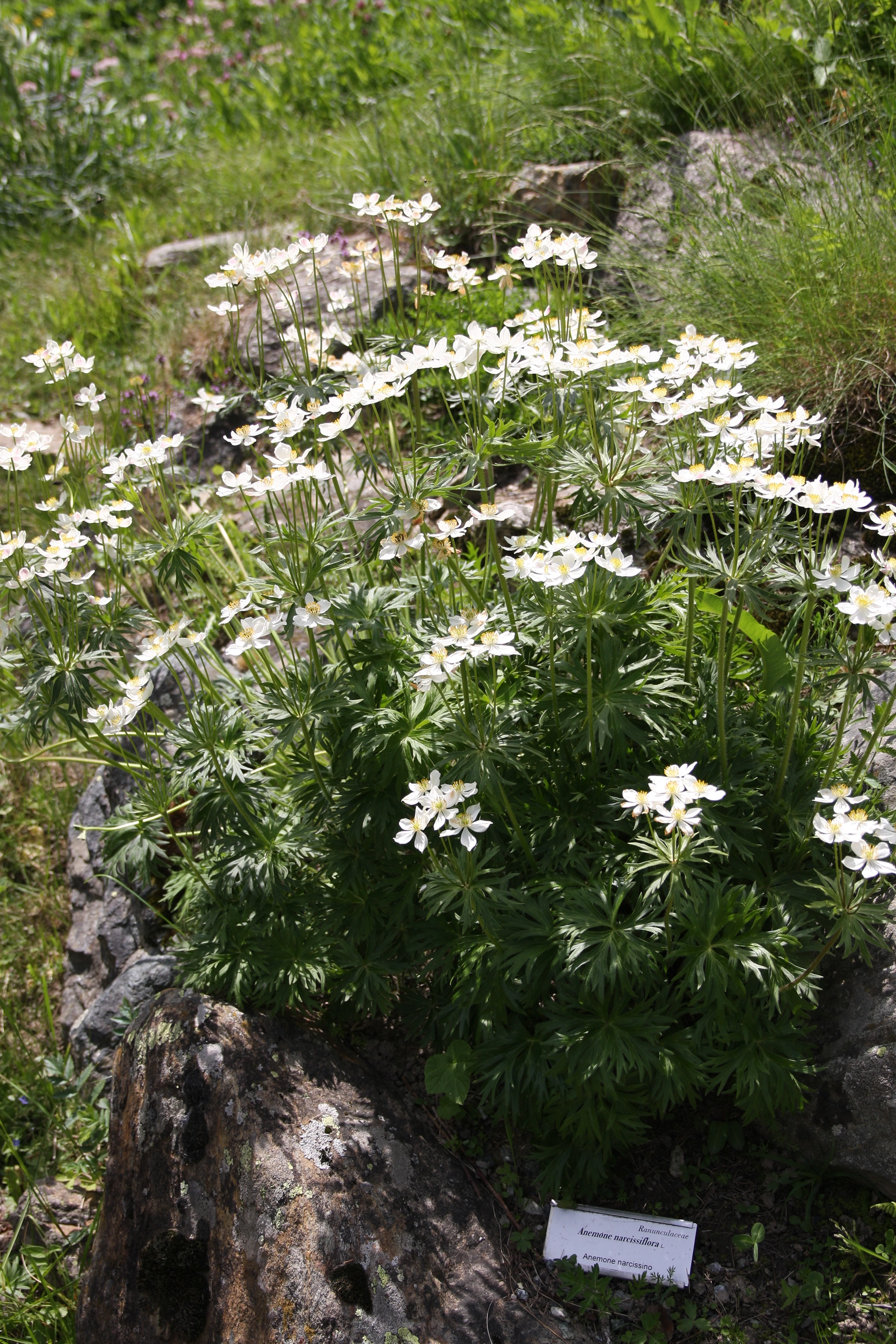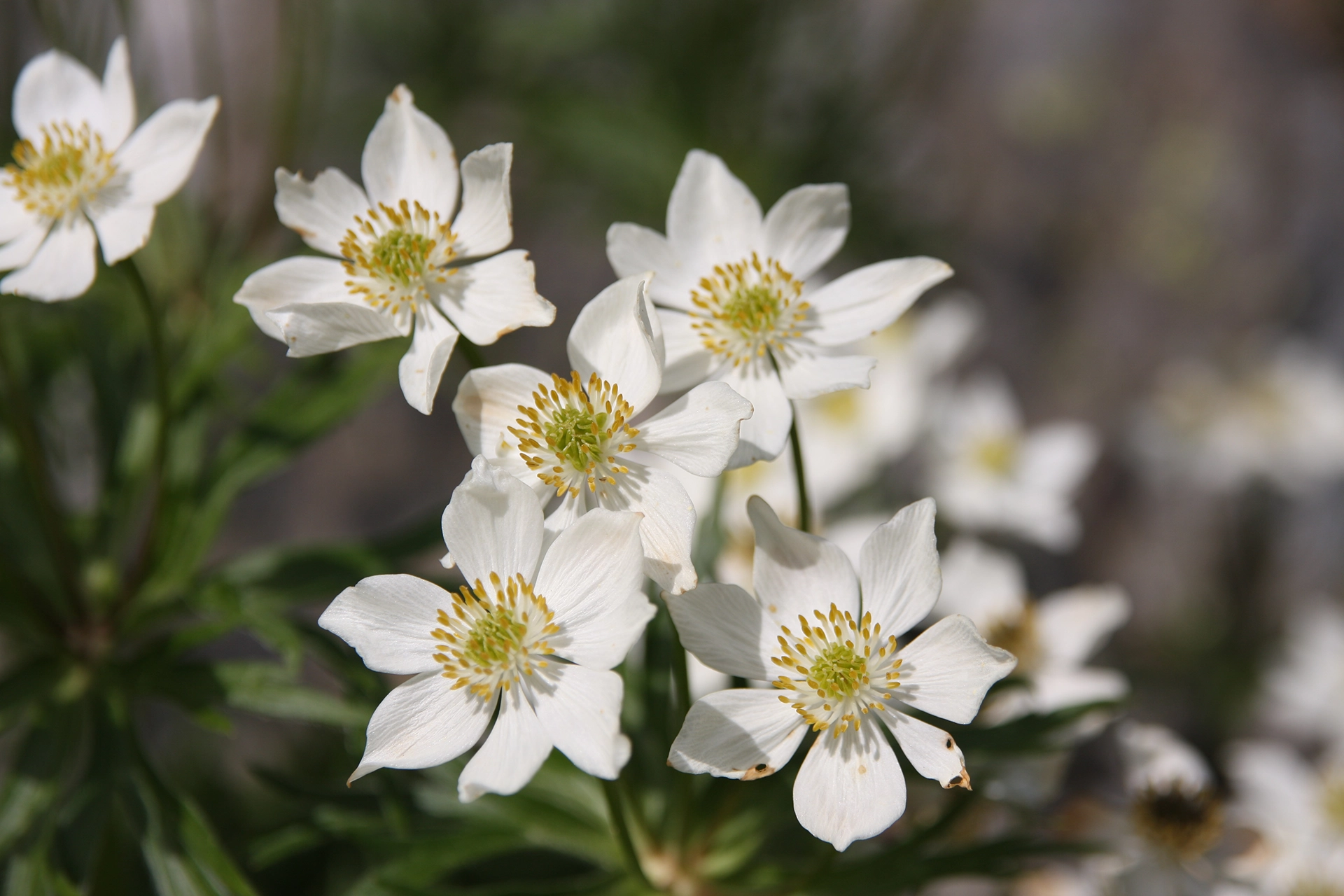Anemone narcissiflora
 See on the map
Listen to audio
See on the map
Listen to audio
- Italian
Fairly common throughout the Alpine arc, this species is very rare in the Aosta Valley as today, only a single station is known, in the upper Val Ferret. It cannot be mistaken for any other anemone as its white-petalled flowers are gathered in umbrels and are not single. Its long-petiolate basal leaves have lamina divided into 3 segments that are deeply divided into laciniae. The cauline leaves are similar, but sessile and thicker under the inflorescence. Like all species that belong to the Ranunculaceae family, it is poisonous for both humans and animals. The name of the genus comes from the Greek \"ánemos\" which means wind, probably due to the ease with which the tepals detach in the slightest breeze or due to wind-assisted dispersal of certain species of the genus. Its specific name indicates the resemblance of its flowers to those of the narcissus.



